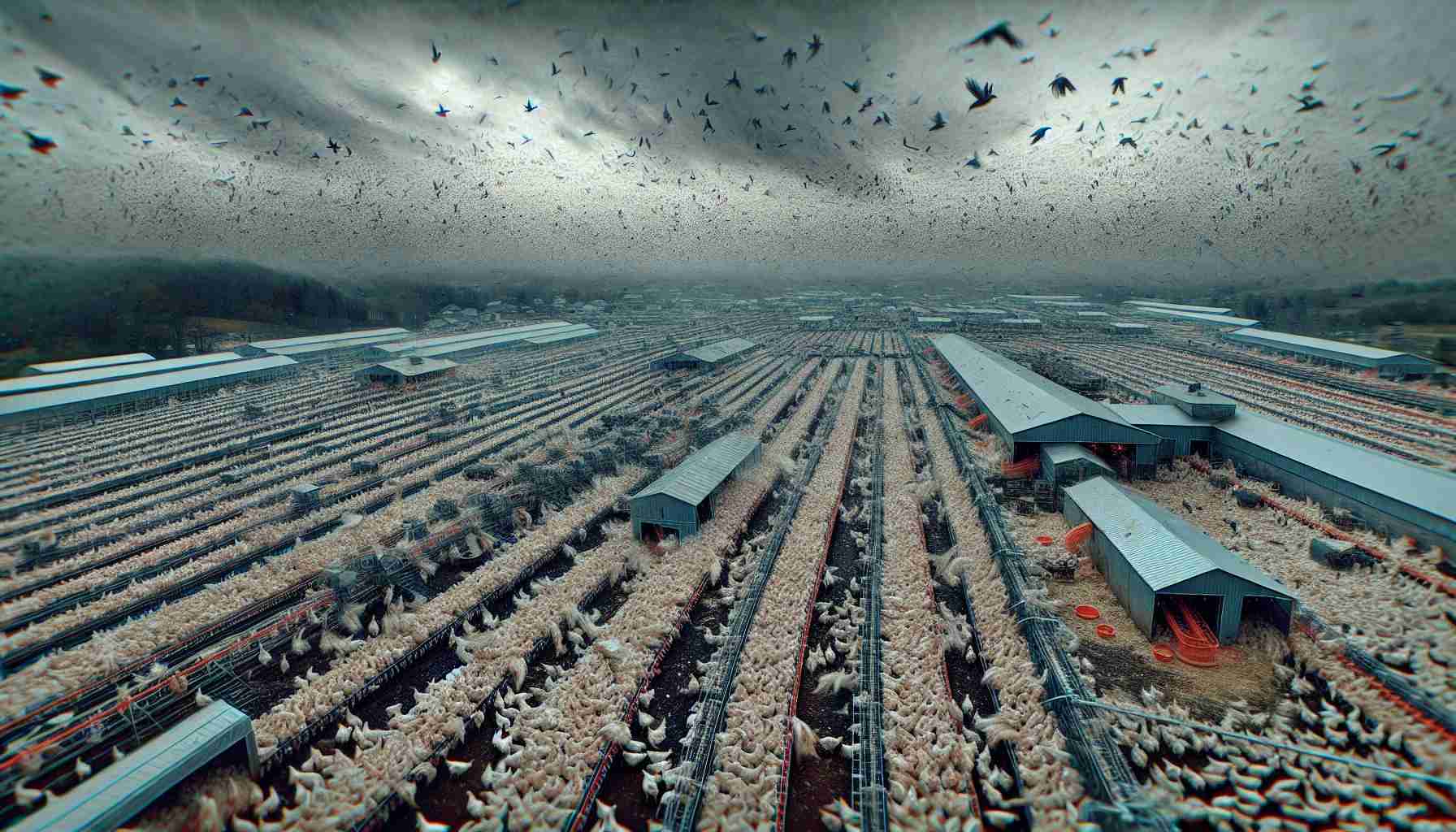- Pennsylvania has experienced a serious bird flu outbreak, resulting in the loss of over 2 million birds.
- The lethal H5N1 strain has been confirmed in several counties including Cumberland, Dauphin, Lancaster, Lebanon, and Lehigh.
- Neighboring states are also affected, with significant losses reported in Ohio and Maryland.
- The Pennsylvania Department of Agriculture has implemented quarantines and testing protocols to control the outbreak.
- Public health concerns arise with 67 reported human cases linked to animal contact, though the risk remains low.
- The state legislature has responded by enhancing testing capacity and facilitating training for poultry technicians.
- Cooking poultry and eggs properly ensures they remain safe for consumption, highlighting the need for ongoing vigilance.
In an alarming resurgence of bird flu, Pennsylvania’s poultry industry faces a devastating blow as five cases have led to the loss of over 2 million birds. The USDA has confirmed outbreaks across various counties, including Cumberland, Dauphin, Lancaster, Lebanon, and Lehigh, revealing the lethal strain H5N1 that had lain dormant for nearly two years.
The most significant outbreak occurred at a commercial egg-laying farm in Dauphin County, ravaging nearly 2 million birds alone. As neighboring states grapple with their outbreaks—9.1 million birds impacted in Ohio and over 800,000 in Maryland—the urgency to contain the disease escalates. The Pennsylvania Department of Agriculture swiftly quarantined affected flocks and imposed stringent testing protocols on farms within a 6-mile radius.
This outbreak does not only threaten poultry but also raises alarm bells for public health, with 67 reported human cases linked to animal contact, although the current health risk remains low. The disease spreads through droppings and interactions with wild birds, escalating the need for precautionary measures.
In response, the Pennsylvania Legislature moved quickly to enhance testing capacity by allowing legal immigrants to become Certified Poultry Technicians.
While eggs and poultry products remain safe when cooked properly, vigilance is crucial. As the state and neighboring farms implement urgent measures to stem the tide, this serves as a stark reminder of our interconnectedness with wildlife and the fragile balance of the ecosystems we inhabit. Stay informed and safe!
Bird Flu Resurgence: What You Need to Know About the Latest Pennsylvania Outbreak!
Overview of the Recent Bird Flu Outbreak
The resurgence of the avian influenza (bird flu), specifically the H5N1 strain, in Pennsylvania’s poultry industry poses a significant threat, leading to the loss of over 2 million birds. The outbreaks have been confirmed in several counties including Cumberland, Dauphin, Lancaster, Lebanon, and Lehigh. This situation has not only devastated local poultry farms but has also sent ripples through neighboring states, with Ohio and Maryland experiencing substantial losses, impacting a total of 9.1 million and 800,000 birds, respectively.
Current Measures and Regulations
In response to this alarming situation, strict measures and regulations have been put into place. The Pennsylvania Department of Agriculture has implemented quarantine protocols for affected flocks and mandated rigorous testing within a 6-mile radius of the infected farms. These proactive steps aim to contain the spread of the virus and protect both agriculture and public health.
Impact on Public Health
While the Centers for Disease Control and Prevention (CDC) reports that the risk to the public health remains low, the human cases related to the outbreak total 67. These infections have largely occurred through contact with infected birds or contaminated environments, emphasizing the importance of biosecurity measures and personal protective equipment for those who handle poultry.
Innovations and Industry Responses
To bolster the response to this crisis, the Pennsylvania Legislature has acted swiftly to promote an increase in testing capacity. They have facilitated legal immigrants to become Certified Poultry Technicians, which is a strategic move to enhance workforce skills in managing poultry health and safety.
Trends in Poultry Safety and Consumer Awareness
The poultry and egg products market is resilient, with the USDA stating that these products are safe to consume if properly cooked. Nonetheless, consumer awareness is critical. There is an observable trend towards sourcing locally produced eggs and poultry, which has surged amid concerns over disease outbreaks. This situation may lead to a more significant shift in consumer behavior, favoring farms that adhere to strict biosecurity measures.
Limitations and Future Predictions
Despite the current situation, it’s essential to recognize some limitations. Surveillance systems may not catch every case of avian influenza, especially in wild bird populations, which can act as reservoirs for the virus. Experts predict that modern agricultural practices will need to adapt, focusing more on sustainable farming practices and improved biosecurity protocols to mitigate future outbreaks.
What You Need to Know: Key Questions
1. How is avian influenza transmitted to humans?
Avian influenza, particularly the H5N1 strain, is primarily transmitted to humans through direct contact with infected birds or their droppings. Additionally, contaminated surfaces and environments can serve as vectors for transmission.
2. What steps are being taken in Pennsylvania to combat the outbreak?
The Pennsylvania Department of Agriculture has quarantined infected flocks and instituted mandatory testing protocols for farms within a defined radius. The state is also enhancing its workforce capabilities by allowing legal immigrants to become Certified Poultry Technicians.
3. What are the potential long-term effects of this outbreak on the poultry industry?
The long-term consequences could include changes in regulations, heightened biosecurity measures, and shifts in consumer preferences towards locally sourced and biosecure poultry products. Notably, the impact on prices and supply chains could also transform market dynamics.
For further reading on the poultry industry and updates regarding poultry health, you can visit USDA.
